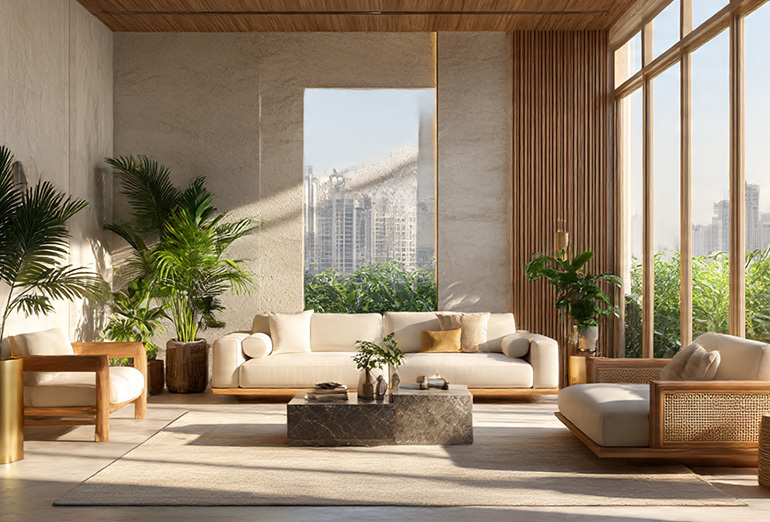-
28 Oct, 2025
- By Nickel
Bangalore: The Heart of India’s Design Revolution
Home to India’s most dynamic design culture, Bangalore has emerged as the hub for innovation in architecture and interiors alike. In 2024, the Indian interior design industry was valued at USD 34 billion and is projected to nearly double to USD 71 billion by 2033 (CAGR 8.5%) (IMARC Group).
Within that ecosystem, Bangalore leads as a design-first city, housing a majority of the country’s commercial, tech, and luxury residential projects.
From Koramangala’s vibrant coworking hubs to Indiranagar’s boutique stores, the best interior designers in Bangaloreare shaping how India works, shops, and lives.
Why Bangalore Attracts the Best Design Talent
A Creative Economy: With a metro GDP exceeding USD 360 billion, the city is home to both corporate giants and experimental startups that invest in premium design.
Cultural Fusion: Bangalore’s cosmopolitan culture allows designers to blend global aesthetics with local identity.
Sustainability Mindset: Green interiors, recycled materials, and energy-efficient lighting are no longer niche—they’re expectations.
Tech Integration: AR/VR design visualization, AI-driven layout planning, and smart-office automation are standard in top studios.
The city’s mix of innovation, affluence, and aspiration has created fertile ground for design excellence.
Average Pricing Insights
According to multiple Bengaluru-based firms (DesignCafe, FabDiz, Bonito Design), the average full-service design cost in 2025 ranges between ₹1,500–₹3,000 per sq. ft. depending on complexity.
- Residential: ₹1,200–₹2,000 per sq. ft.
- Commercial & Retail: ₹1,800–₹3,500 per sq. ft.
- Consultancy-only: ₹75–₹200 per sq. ft.
These numbers highlight Bangalore’s position as both a creative and premium market—where clients prioritize long-term value over short-term savings.
What Defines the “Best” Interior Designers
Being among the best interior designers in Bangalore isn’t about scale alone; it’s about substance:
- Design Intelligence: A balance of aesthetics, ergonomics, and psychology.
- Material Literacy: Knowing which materials perform best in India’s climate.
- Execution Integrity: Seamless project management from concept to handover.
- Cultural Sensitivity: Respecting Indian living patterns while introducing modern comfort.
- Sustainability & Adaptability: Future-proofing every space.
These traits separate seasoned professionals from trend-chasers.
Design Trends Defining 2025
According to Mordor Intelligence, Bangalore’s design industry is expected to grow at 12–14% annually through 2030. The trends driving that growth include:
Biophilic Offices: Green walls, daylight, and natural finishes.
Hybrid Work Environments: Modular work zones adaptable to remote-office balance.
Experience-Led Retail: Immersive stores blending technology with tactile elements.
Minimalist Luxury: Clean lines, refined materials, and calm energy.
Cultural Revival: Incorporating Indian art, craft, and storytelling into modern design.
Together, these trends highlight how Bangalore designers are building not just for aesthetics—but for emotion and efficiency.
Nickel XD: Redefining Function and Form
Among Bangalore’s new-age design studios, Nickel XD Interior Design Studio brings a distinct creative philosophy—powerful, infinitely customisable, and mysterious designs that merge functionality with intrigue.
Their portfolio spans retail, commercial, and office spaces, each designed to inspire movement, engagement, and balance.
Nickel XD represents the kind of studio that defines “best” not by size, but by strategy, innovation, and storytelling.
The Broader Industry View
Statista reports that India adds nearly 250 million sq. ft. of built space every year, creating massive demand for professional design. Meanwhile, over 70% of clients in urban metros now prefer hiring professionals rather than contractors—an indicator of rising trust in organized design firms.
This shift ensures that Bangalore’s interior design market will continue to attract investment, talent, and technology in equal measure.
Conclusion
The best interior designers in Bangalore do more than craft spaces—they shape culture, community, and comfort.
With technology, sustainability, and creativity converging, Bangalore stands as the design capital of modern India.
So the question is—when your next space is ready to be imagined, will it simply look good, or will it speak to those who walk through it?


